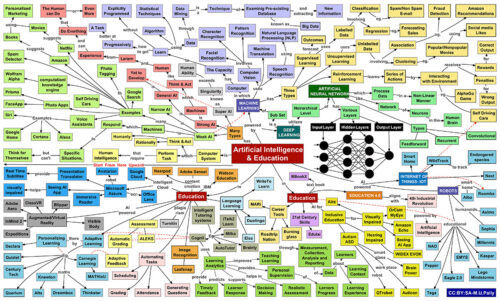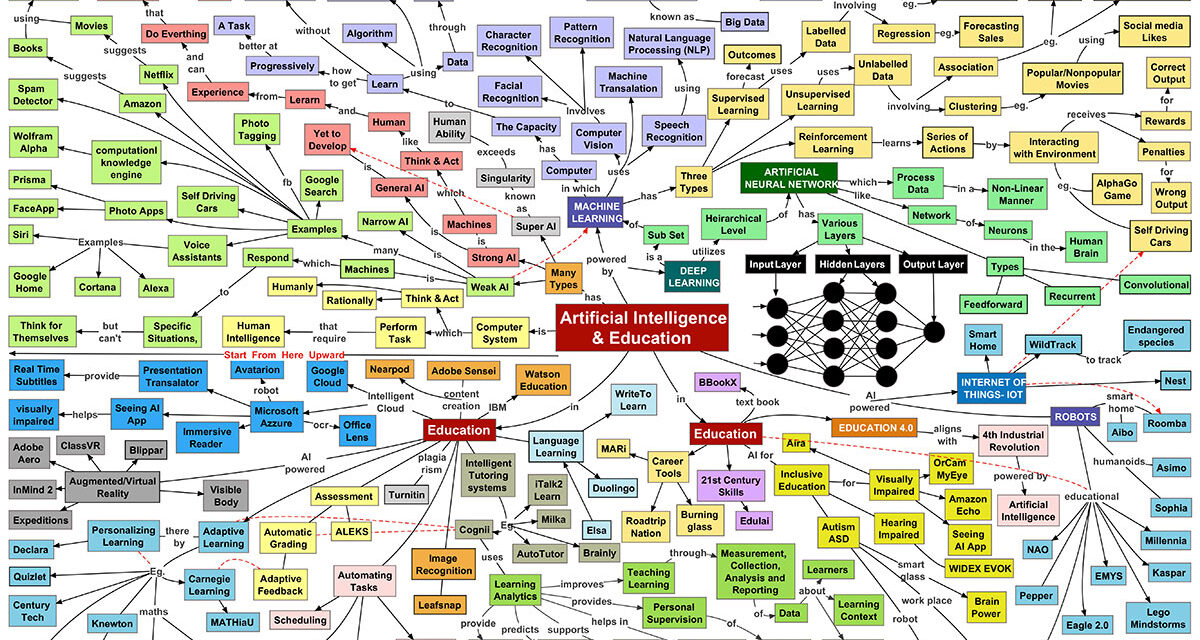
“Paily, M.U. Graphics on Artificial intelligence and Education” by Paily M U is licensed under CC BY-SA 4.0. To view a copy of this license, visit https://creativecommons.org/licenses/by-sa/4.0/?ref=openverse.
By NEIL ZOLOT
WAKEFIELD — Artificial Intelligence is a fact of life and is affecting academia.
With that in mind the School Department has created an AI Guide for the school system. “The reason we feel we need to create an AI Guide is because of growing AI technology and its use by students and staff members,” Middle and High School English Language Curriculum Coordinator Margaret Messier told the School Committee at their meeting Tuesday, September 24.
“We want to make sure it’s not doing the work for students while still helping them.”
The guide gives direction on acceptable and unacceptable uses of AI. Messier said AI can be used “in productive ways to make us more effective rather than doing our thinking for us. We’re trying to avoid students asking AI to write an essay for them.”
It can be used to help generate a study guide or help English as Learned Language students craft better sentences, although Messier cautions, “If you’re giving a grammar lesson and want students to understand grammar, you don’t want them to use it at all.”
Superintendent Doug Lyons added, “We don’t want students passing off something created by something else as their own. We know AI is there, but it can’t replace thinking.”
He thinks that will be avoided because “teachers know their students. They know their style. There are patterns in student work and if something varies from the pattern teachers will know.”
“It’s obvious when a child uses it,” Galvin Middle School Principal Megan Webb said after she briefed the School Committee on Galvin’s School Improvement Plan.
“Our teachers know their kids,” Dolbeare Elementary School Principal TJ Liberti, at the meeting with other elementary school principals to brief the School Committee on their School Improvement Plans, agreed.
Messier acknowledged there are gray areas and use of AI is evolving. She called it “exciting and slightly terrifying” and suggested to students “if you’re concerned if it’s an unacceptable use, have a conversation with your teacher.”
School Committee member Peter Davis asked whether computer program spell- and grammar-checks constituted AI. “You could argue that is AI,” he offered.
Messier answered no and use of AI would be the result of “more active use.”
School Committee member Kevin Fontanella agreed use and acceptance of AI is evolving. “In five years there’ll be no talk of plagiarism, with the idea this is how you do things,” he speculated.
School Committee Chairman Stephen Ingalls likened discussions about AI to those in the past about how using calculators would affect math skills in the 1970s. (There were adding machines before that, but they were in offices and weren’t portable.) “It’s like any other tool,” he said. “You have to know how to use it.”
Messier also pointed out teachers are using AI to help them differentiate how to teach certain students based on their needs, although Woodville Elementary School principal Matthew Carter said lessons are provided in curricula.
“We want to make sure we’re not using AI to create assessments,” he added. “I want to make sure assessments are based on what is happening and those given to us are being utilized by the staff and we’re not looking at outside resources.”
Use of AI is not a problem in Middle School or at the elementary level, at least not yet. “It’s not going away,” Webb acknowledged. “We have to figure out how to use it properly.”
The meeting was the first attended by Student Representatives of the School Committee Alla Othman and Maya Palic, both juniors. They will alternate with seniors Ahmed Othman, Alla’s brother, and Shea Sunkyten at meetings.
Othman liked the fact the School Department is accepting some uses of AI. “There are bad uses, but a lot of us use it for study guides. It’s a good tool for that.”
A commonly used one is ChatGPT.





